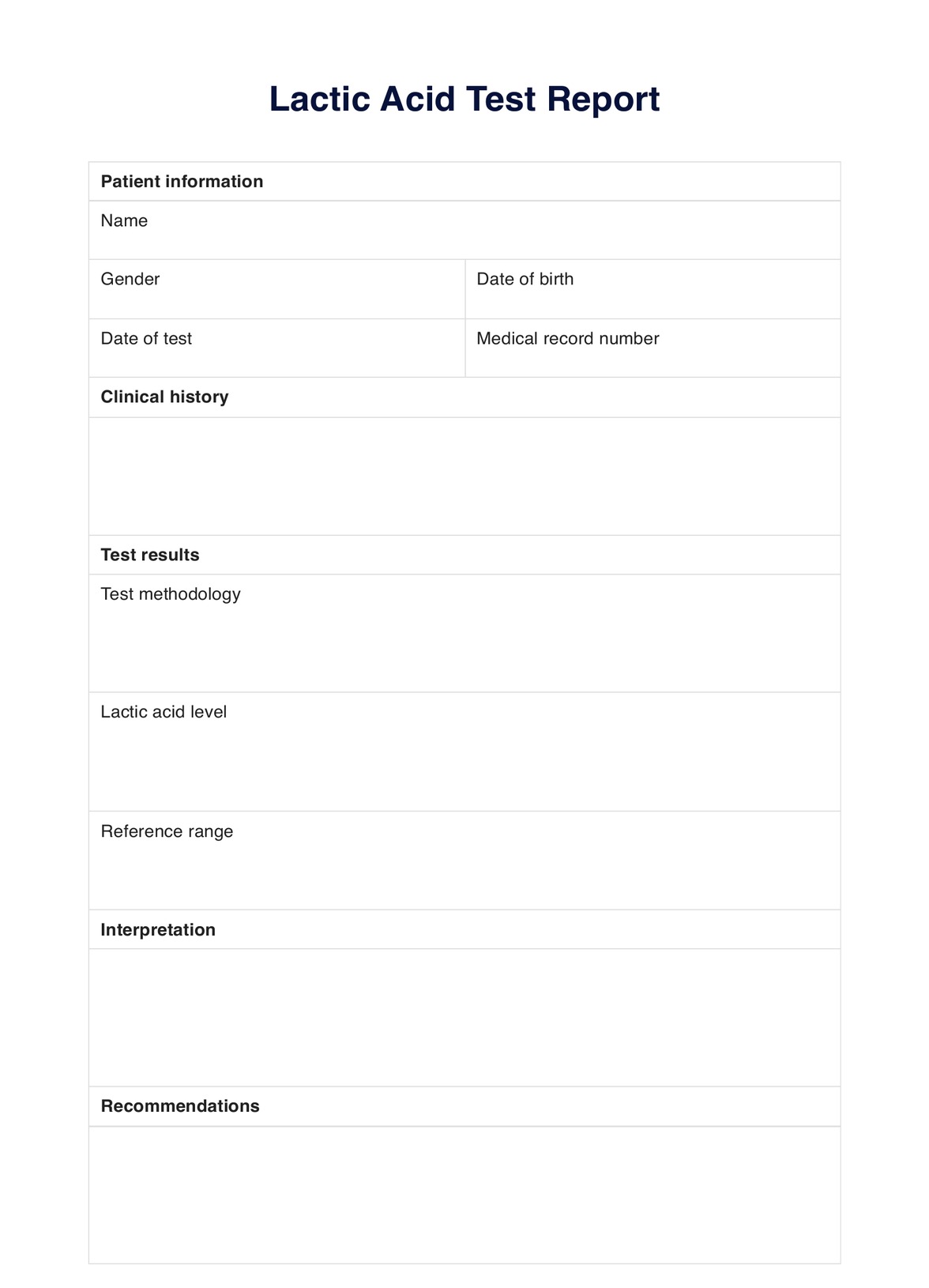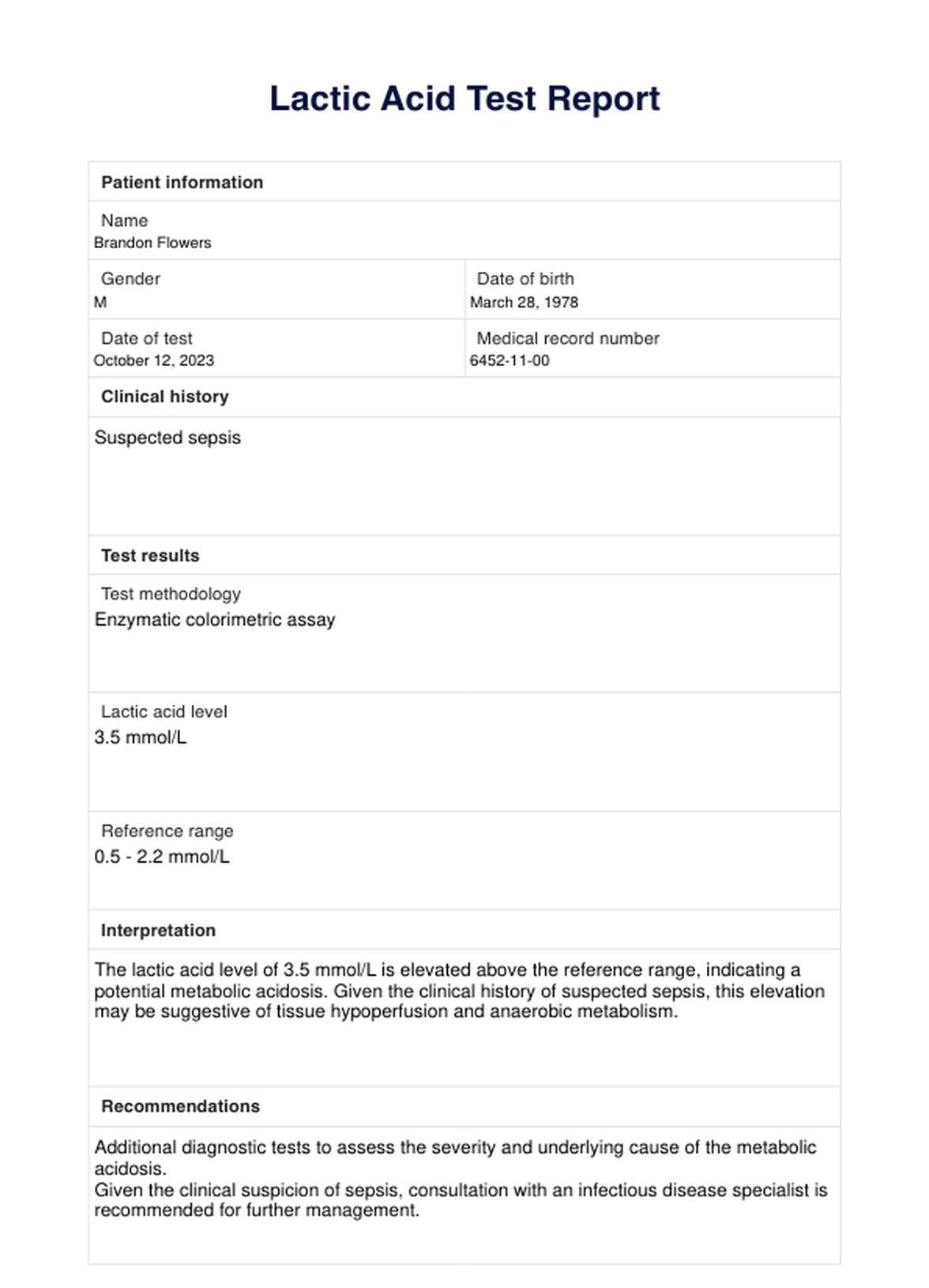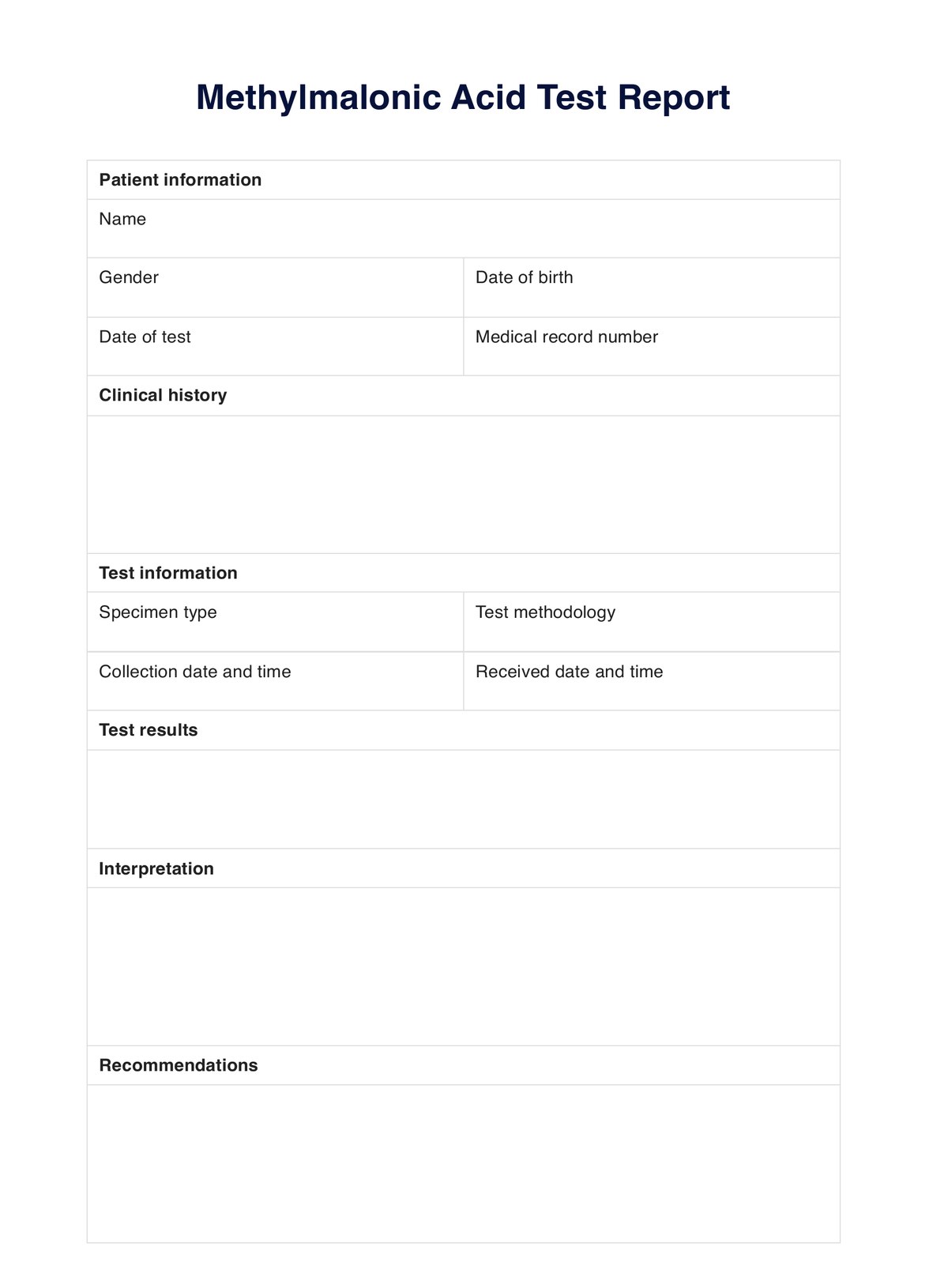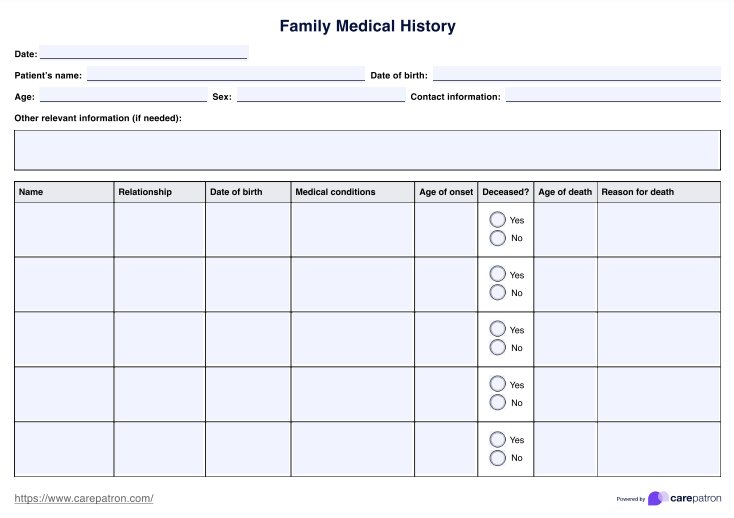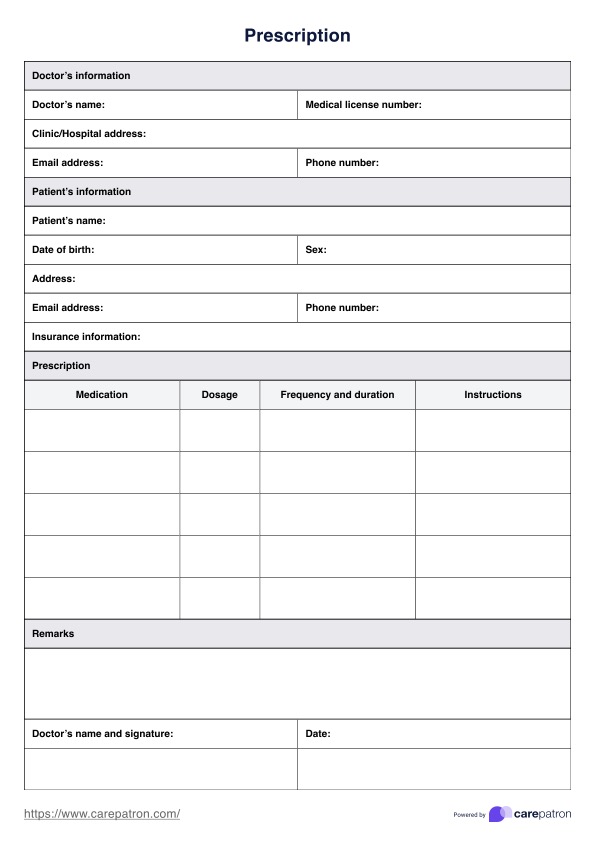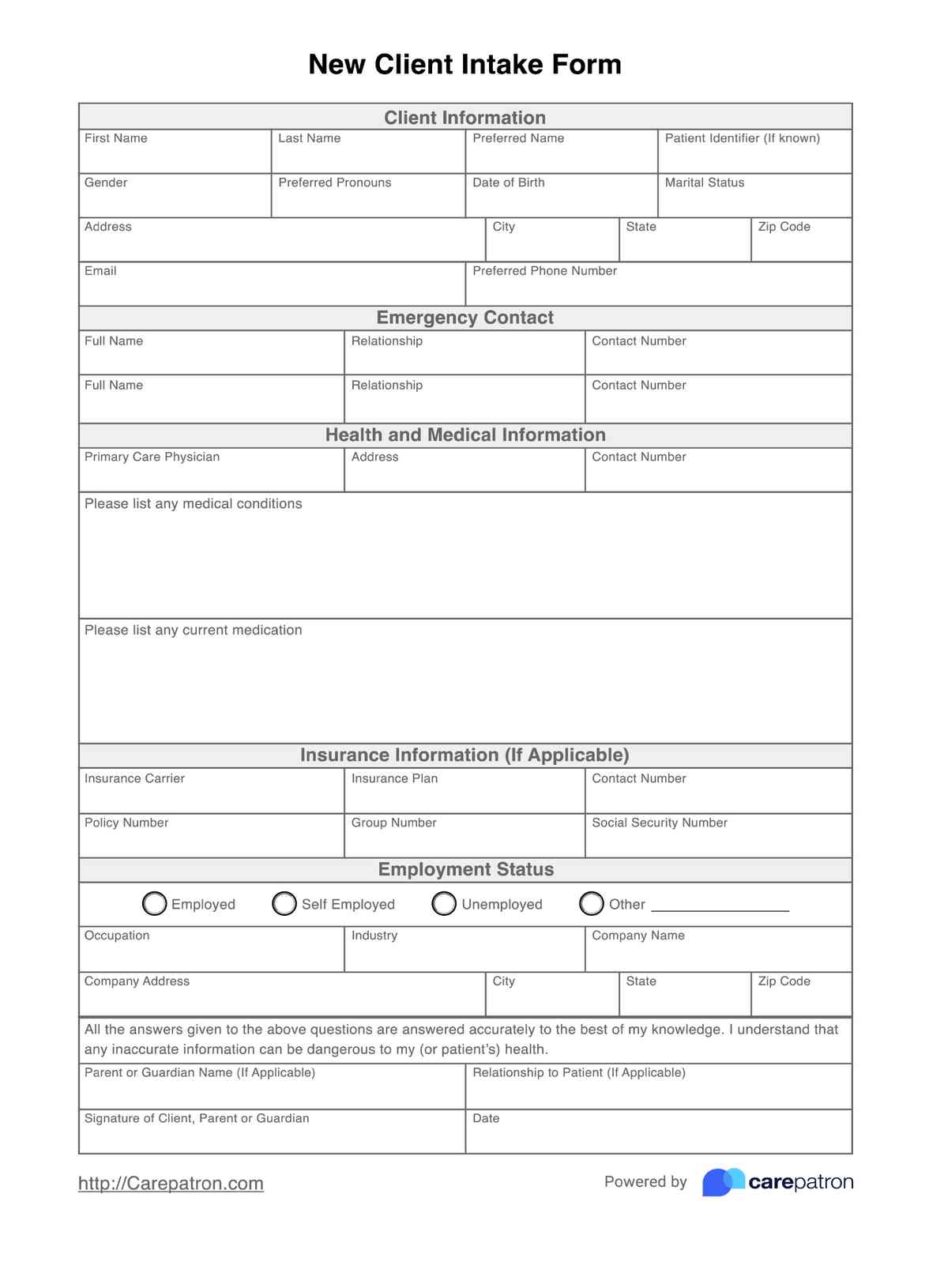Lactic Acid Test Reports
Get access to a Lactic Acid Test Report template for easy record-keeping. Learn more about Lactic Acid Tests and how to interpret test results.


What is a Lactic Acid Test?
Lactic acid is a substance the body produces when it breaks down carbohydrates for energy, especially during strenuous exercise. It is essential to your body's metabolism, but excess production can lead to muscle fatigue.
A Lactic Acid Test measures the level of lactic acid in the blood and is typically used to diagnose lactic acidosis, a condition characterized by high lactic acid levels. It can be an important indicator of whether your body's metabolism is functioning properly.
The test is relatively simple and involves taking a small blood sample from a vein in the patient's arm. The sample is then sent to a laboratory for analysis. Results are usually available within 24 hours and are typically documented in a Lactic Acid Test Report.
The report includes important information such as the patient's name, the date and time of the test, and the lactic acid level in their blood. It may also include other relevant data, such as reference ranges for different age groups and potential causes of elevated lactic acid levels.
Lactic Acid Test Reports Template
Lactic Acid Test Reports Example
How does it work?
Our printable Lactic Acid Test Report lets you record all the essential information about a patient's lactic acid levels. This template is designed to help you easily keep track of your patients' test results, making it easier to interpret and monitor any changes over time. Follow these steps to get started:
Step One: Download the template
Access the free Lactic Acid Test Report using the link on this page. You can also get a copy from the Carepatron app or our resources library.
Step Two: Enter patient and test details
Start by entering the patient's name, along with the date and time of the test. This will ensure that all the information recorded is specific to that sample.
Step Three: Record lactic acid level
Next, record the lactic acid level in mmol/L (millimoles per liter) or mg/dL (milligrams per deciliter). This is the standard unit of measurement for lactic acid levels in the blood.
Step Four: Add more information
You can also include any relevant data, such as reference ranges and potential causes of elevated lactic acid levels. This will provide a more comprehensive overview of the patient's results.
Step Five: Print or save the report
Once all the necessary information has been entered, you can print or save the report for future reference. This report is designed to be easily accessible and shareable between healthcare professionals.
When would you use this test report?
You can use the Lactic Acid Test Report template to track lactic acid levels in patients with suspected or diagnosed conditions such as sepsis, shock, heart failure, liver disease, kidney disease, and diabetes. Alternatively, you can use the template to:
Monitor the effectiveness of treatment
Our Lactic Acid Test Report template can help you monitor the effectiveness of treatment for conditions that can cause elevated lactic acid levels, such as sepsis and shock. By regularly tracking a patient's lactic acid levels, you can determine if their condition is improving or worsening and make necessary adjustments to their treatment plan.
Track changes in lactic acid levels
Lactic acid levels can fluctuate over time for patients with chronic conditions like liver or kidney disease. With our free template, you can easily track changes in lactic acid levels and identify any patterns or trends that may require further investigation or treatment.
Compare results with reference ranges
You can also use our Lactic Acid Test Report template to compare a patient's lactic acid levels with established reference ranges. This can help you determine if their levels are within normal limits or if they may be at risk for serious complications.
Communicate with other healthcare professionals
Our template is designed to be easily shared and communicated with other healthcare professionals involved in a patient's care, such as primary care physicians, specialists, and nurses. This can help ensure that all members of a patient's healthcare team have access to important information about their lactic acid levels and can make informed decisions about their treatment.
What do the results mean?
Lactic acid levels can provide valuable insight into a patient's overall health and the effectiveness of their treatment. Here is a general overview of what different results may mean:
Normal lactic acid levels
If the lactic acid levels fall within the standard reference range. This typically indicates that the patient's body is sufficiently oxygenating tissues and responding effectively to their treatment plan.
Elevated lactic acid levels
Elevated lactic acid levels may suggest that the body is not getting enough oxygen or that a condition such as sepsis or shock is present. This could also point to liver or kidney disease or certain types of cancer.
Below normal lactic acid levels
Though less common, low lactic acid levels may indicate certain types of liver disease or a severe deficiency in essential vitamins such as thiamine (vitamin B1).
Any significant change in lactic acid levels, whether a rise or fall, warrants further investigation. Monitoring these fluctuations and determining their underlying causes is essential to adjust the treatment plan.
Commonly asked questions
Primary care physicians, emergency room doctors, and intensive care unit healthcare providers are among the most frequent requesters of Lactic Acid Tests. They may order this test for patients with certain underlying medical conditions or those experiencing symptoms such as shortness of breath, fatigue, nausea, or confusion.
Lactic Acid Tests are used to evaluate a patient's acid-base balance and can help diagnose various medical conditions. It is commonly performed in emergencies, including shock, sepsis, or heart attack. Lactic Acid Tests may also be ordered for patients with liver or kidney disease, certain types of cancer, or those undergoing treatment for HIV.
The Lactic Acid Test only takes a few minutes to perform. However, the total time from blood draw to results can vary depending on the testing facility's processes. Typically, it may take 30 minutes to a few hours for the results to be available.


